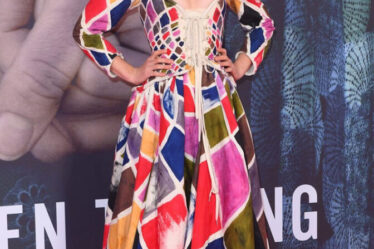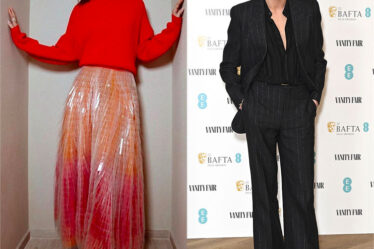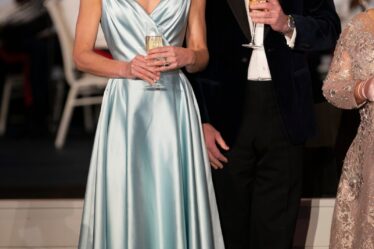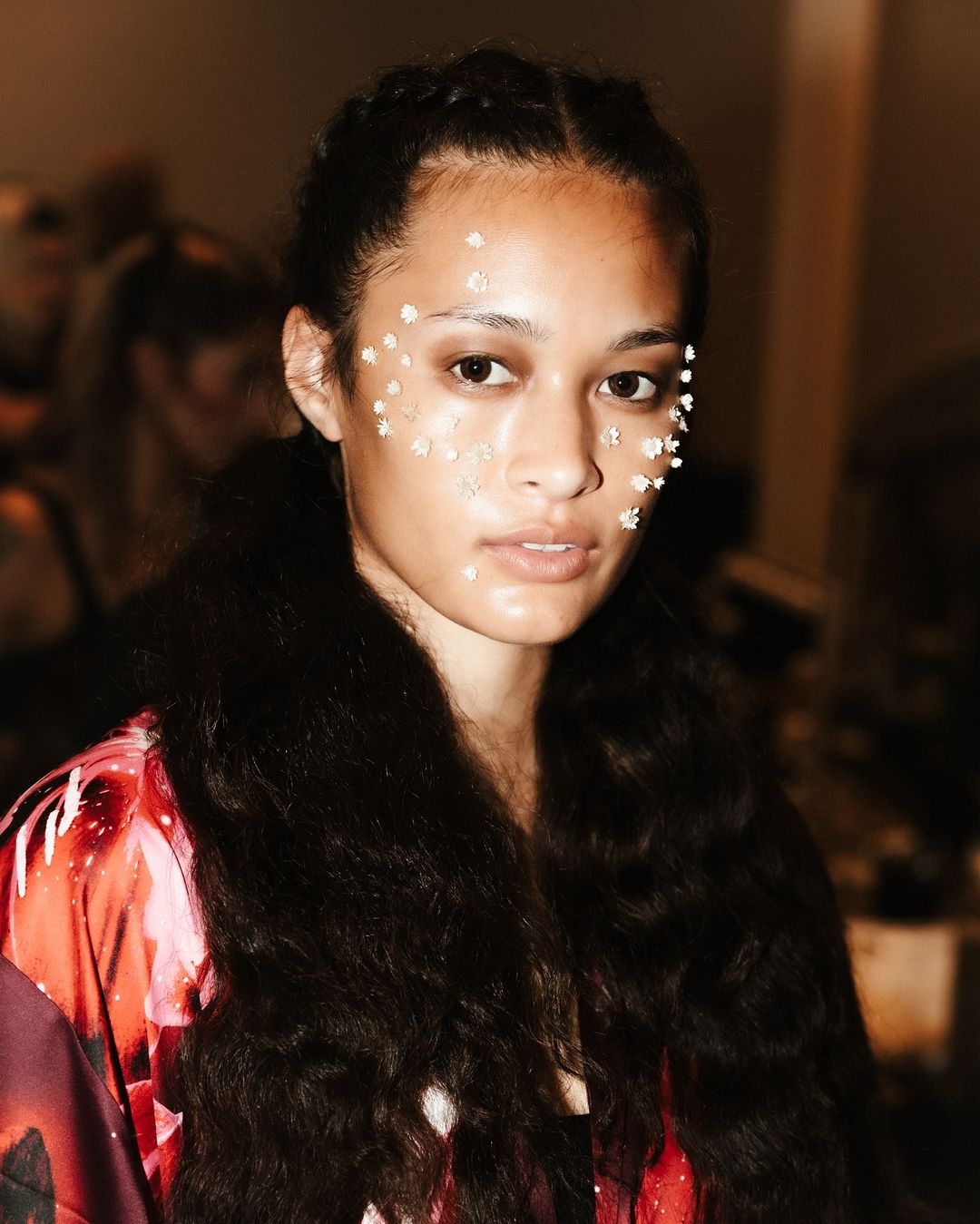
From emerging labels to household names, we take a look at 5 Asian American Pacific Islander designers who shaped NYFW this season.
Backstage at Allina Liu, courtesy of @allina.liu

Growing up, Asian namesake labels were a rarity in fashion. Despite the lasting influence and appropriation of Eastern culture, aesthetics, and design in Western fashion, AAPI designers were rarely highlighted themselves, left off of the most prominent fashion calendars in New York and beyond.
It’s a disconnect that echoes the industry at large: the stigma of “Made in China” labels though over half of the world’s clothes are produced there, as well as some of the most ubiquitous materials in luxury fashion, including velvet, brocade, and silk; the patterns from my grandma’s China and the mandarin collars from qipaos I grew up with replicated on the runway; the exclusion of Asian names and faces from an industry built upon its labour forces and wealth of culture.
In the past decade, the industry has seen monumental shifts towards greater diversity from magazine covers to the runway. And this season, it was powerful to see a number of AAPI designers, both new and established, making headlines and spearheading Spring trends. From Naeem Khan’s Wicked capsule collection to Allina Liu’s paganism-inspired cult, AAPI brands left their mark on this season, imbuing their collections with cultural inspiration and bridging the East and West through their own stories.
Naeem Khan
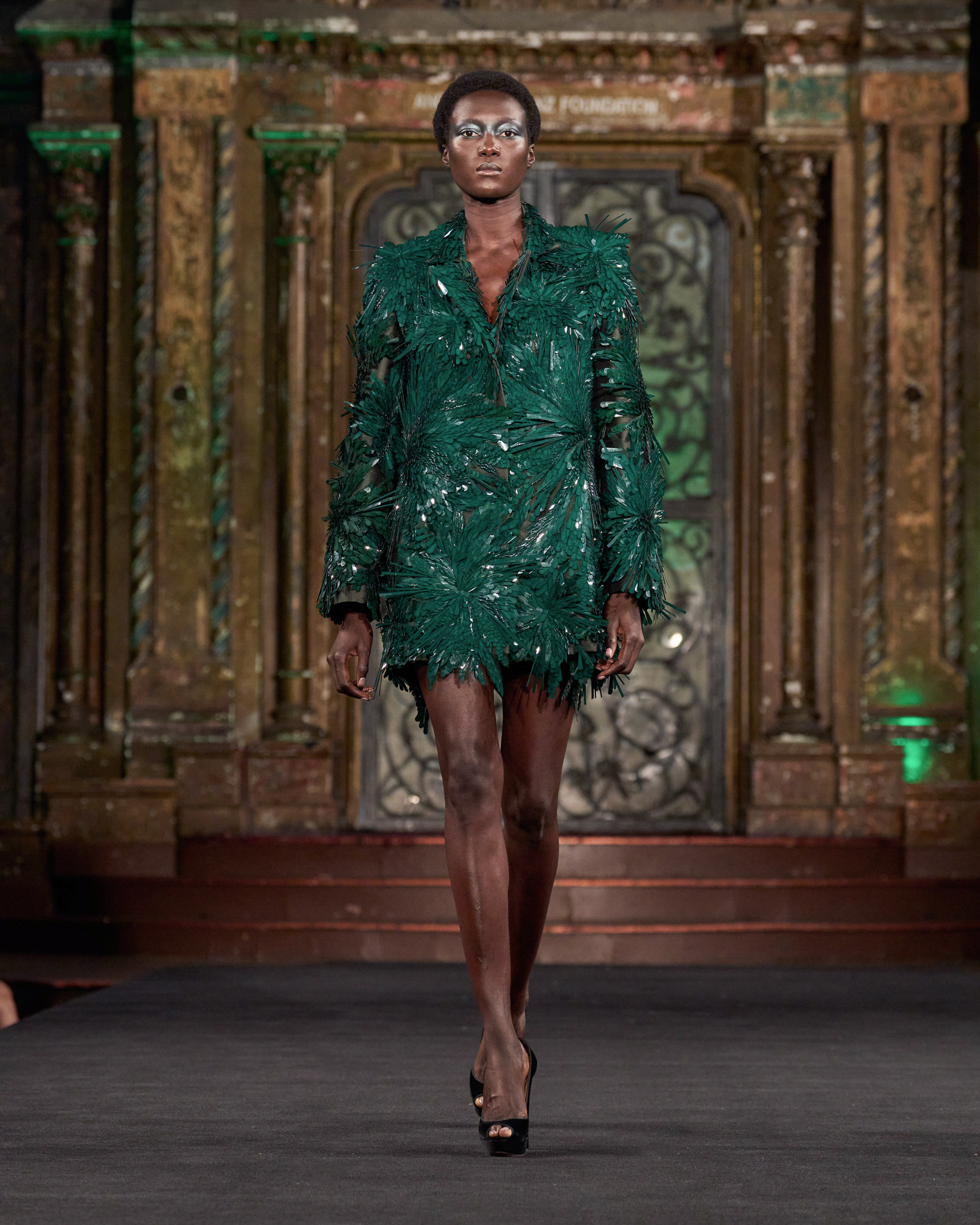
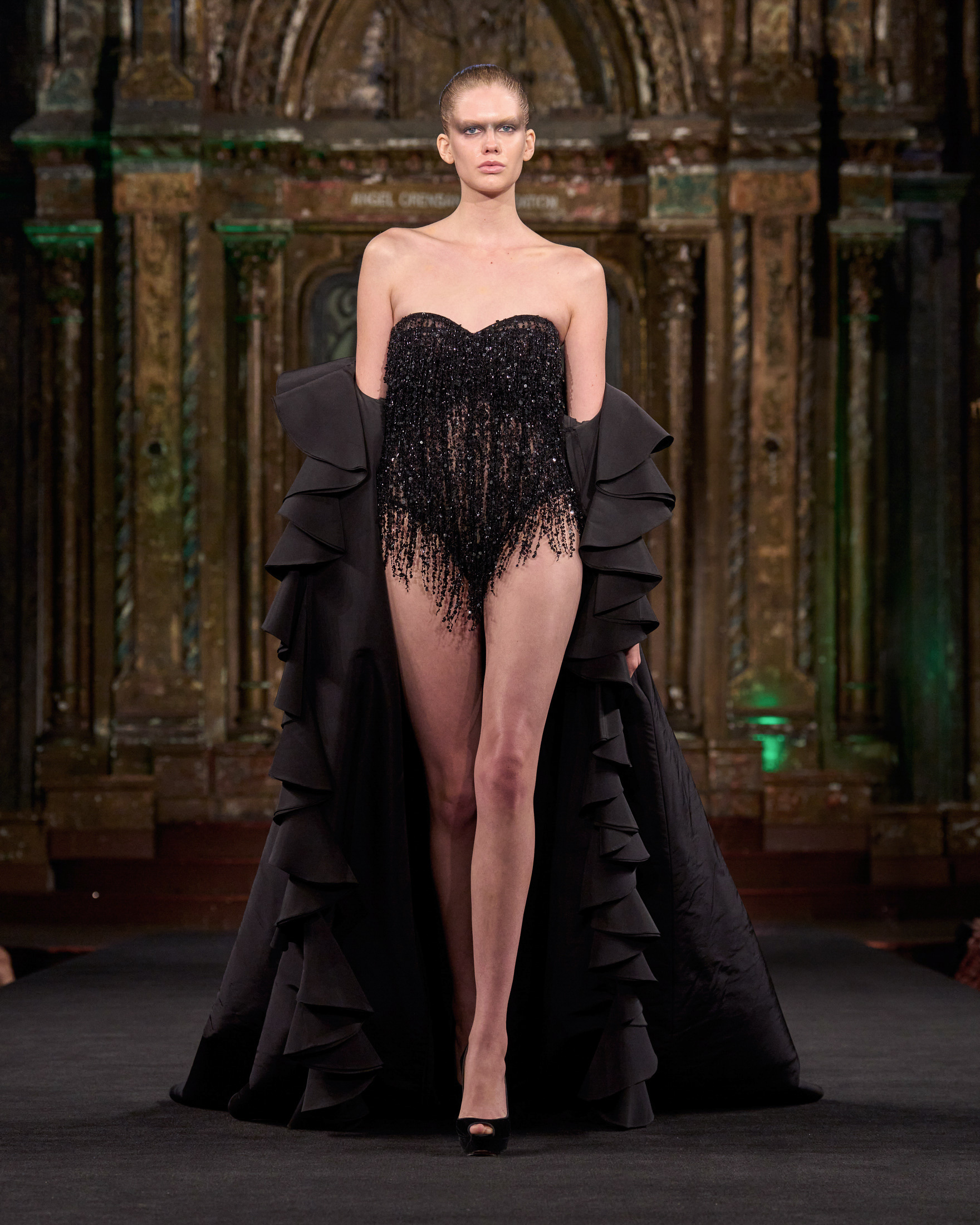

Imagery courtesy of Naeem Khan



As the lights dimmed over Naeem Khan’s Spring 2025 runway on a sunny Monday afternoon, guests prepared for the show’s final bows, mentally planning routes to their next commitment as they waited for the first person to rise from their seat and make their way to the exit. But before they had a chance to stand, an emerald green light stopped the audience in their tracks, lighting the Angel Orensanz Center aglow as the score from Wicked began to play. As a model in a glimmering black bodice and pink ballgown skirt cascaded down the runway, beneath the vaulted ceilings and Gothic stained glass, Khan introduced his celestial Wicked capsule collection — a collaboration with Universal Pictures that pays homage to one of his favourite Broadway shows and celebrates the upcoming movie.
Khan’s show was a true New York Fashion Week highlight. The collection, in classic Khan fashion, bridged the gap between mens and womenswear, and Western and Indian influences, resulting in tailored jackets, fringed sarong skirts, and crystal caftans. Pulling inspiration from Sicilian Baroque architecture, the coastlines of Puglia, and the vineyards of Mount Etna, this season incorporated vibrant colours, crisp whites, and shimmering metallics. The brand pursued a more adventurous direction when it came to tailoring, including oversized shoulders, flared hems, and asymmetrical cuts.
In another merge of contrasts, the finale capsule conveyed a dynamic visual narrative inspired by Elphaba and Glinda, marrying “good” and “evil” through deep emeralds and baby pinks, strong corsetry and easy silhouettes. It honoured the ethos of Wicked and its leading characters with intricacy, craftsmanship and subtly, steering far from costume or clichés. A tiered emerald column gown with glimmering mesh Renaissance sleeves and fluttering skirts beneath crow-embroidered cage corsets left guests with chills, forgetting their next obligations and setting the bar especially high for the remainder of fashion week.
Taottao
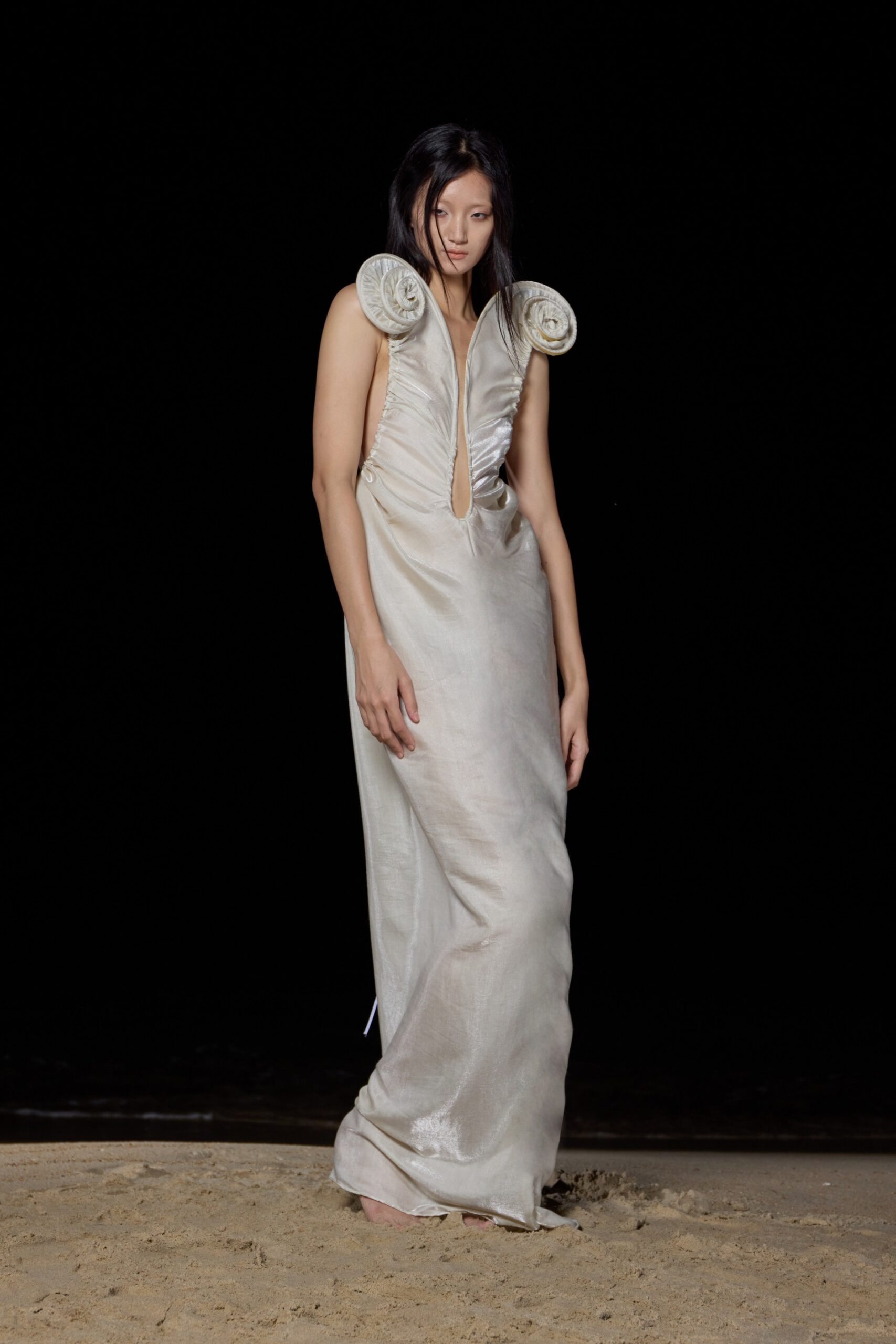
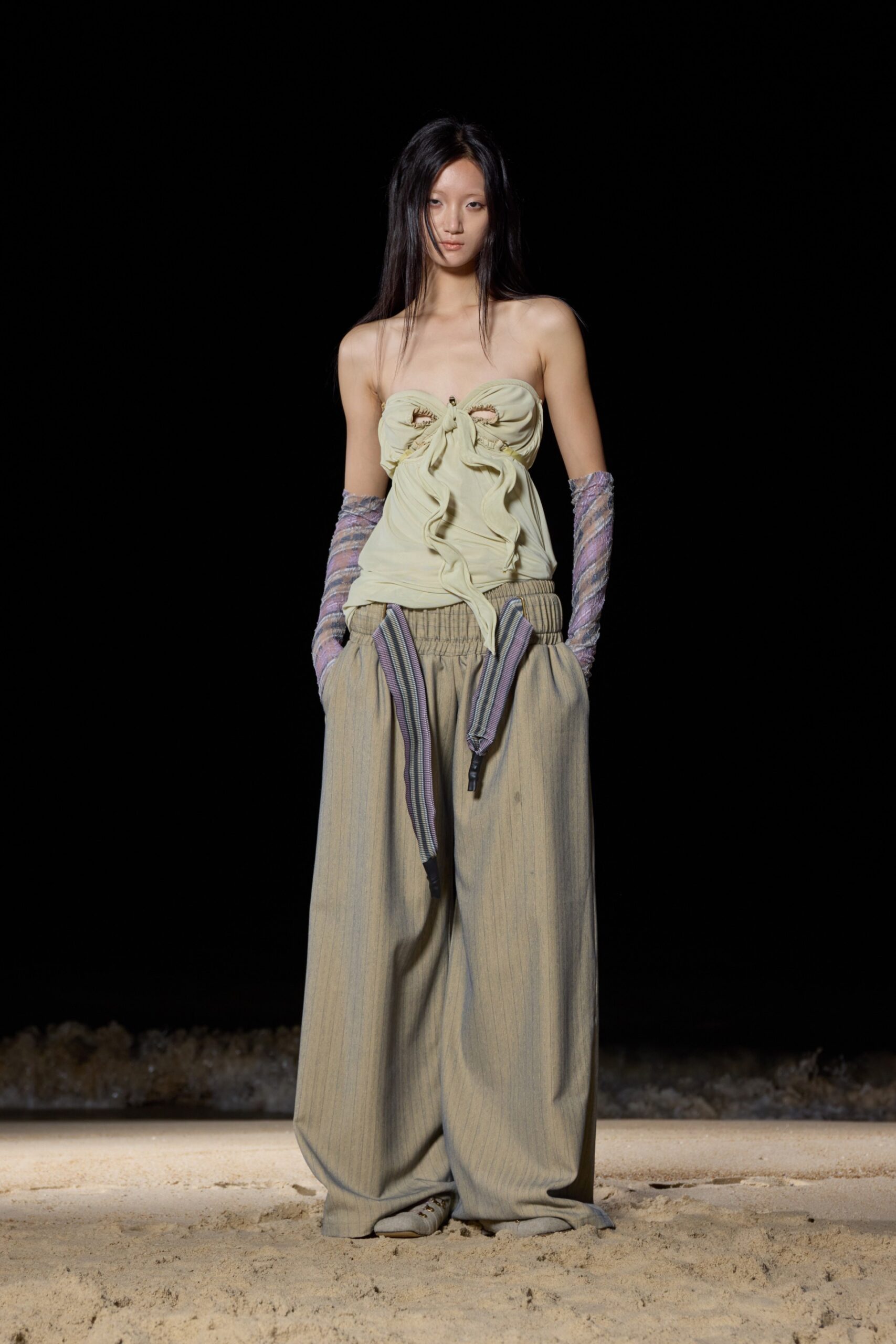
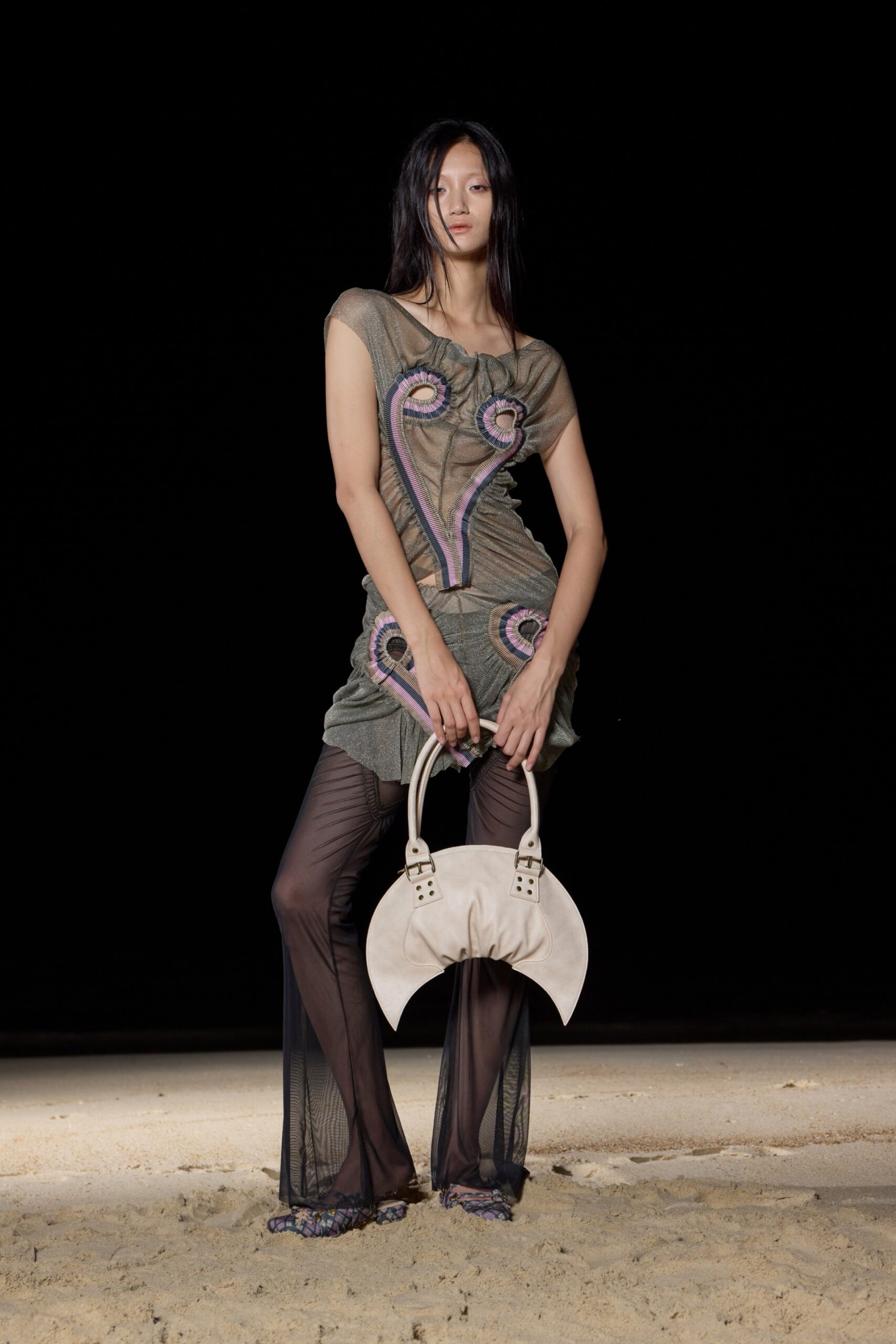
Imagery courtesy of Taottao



After the brand’s resonant debut last season, expectations were high visiting YiTao Li’s SS25 presentation. And the twenty-five-year old emerging designer did not disappoint. The collection, which pays homage to her daydreams and wonders while working at an office desk, gives colour, dimension, and life to the intricacies of Li’s imagination.
Even upon first glance, the collection was indelibly Taottao: intricate layers and corsetry in unprecedented forms once again demonstrated the designer’s mastery of textile manipulation, chunky platform Mary Janes and mesh cutouts indicative of her adventurous styling. One of the most prominent motifs from last season – heart-shaped cutouts with intricate seamwork and ribbing that exaggerates and manipulates the female form – seems to be a mainstay for the brand. “I think I will always have hearts,” Li shared with Wonderland. “I just love them, and I also think playing with a body’s form is always going to be the basis for my designs.”
Plaid prints generated from zoomed in imagery of anime pixels, which were central to Li’s debut collection, also reappeared in this collection. “I took inspiration from the colorways of starfish and sea creatures but toned down the saturation and rendered them into plaids,” she explained.
But while Taottao’s AW24 collection played more with kitsch, girliness, and funk, the anime-inspired muses transformed into forest fairies and mermaids this season. The models, whose shimmery makeup glittered in the sun and sculpturally-gelled hair gave a fresh-out-of-the-water appearance, floated through the garden space in seashell motifs like whimsigoth pixies — the figments of our office desk daydreams. The looks themselves were ripe with intricate corsetry, complex layering, and avant-garde, unconstrained silhouettes — achieved by Li through intricately engineered patterns. “I incorporated some of my most complicated techniques yet this season,” she reflected. “I really challenged myself, creating ribbing with three layers and even venturing into a wider product assortment.” This includes a line of upside-down croissant purses, which are sure to be a fall staple.
Innovative yet wearable, quiet yet provocative, feminine yet rebellious, Taottao has done it again.
Jiaqi Studio
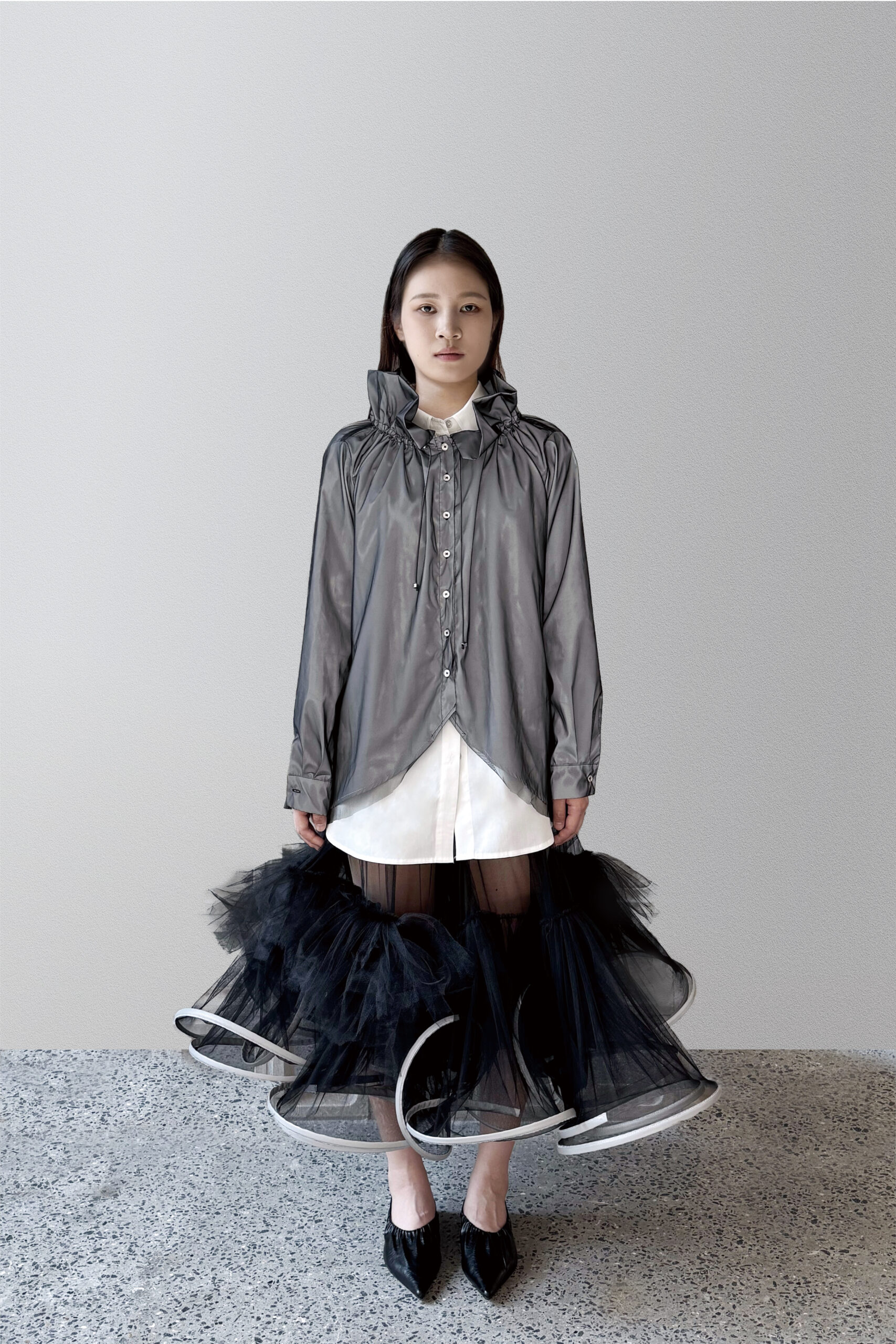
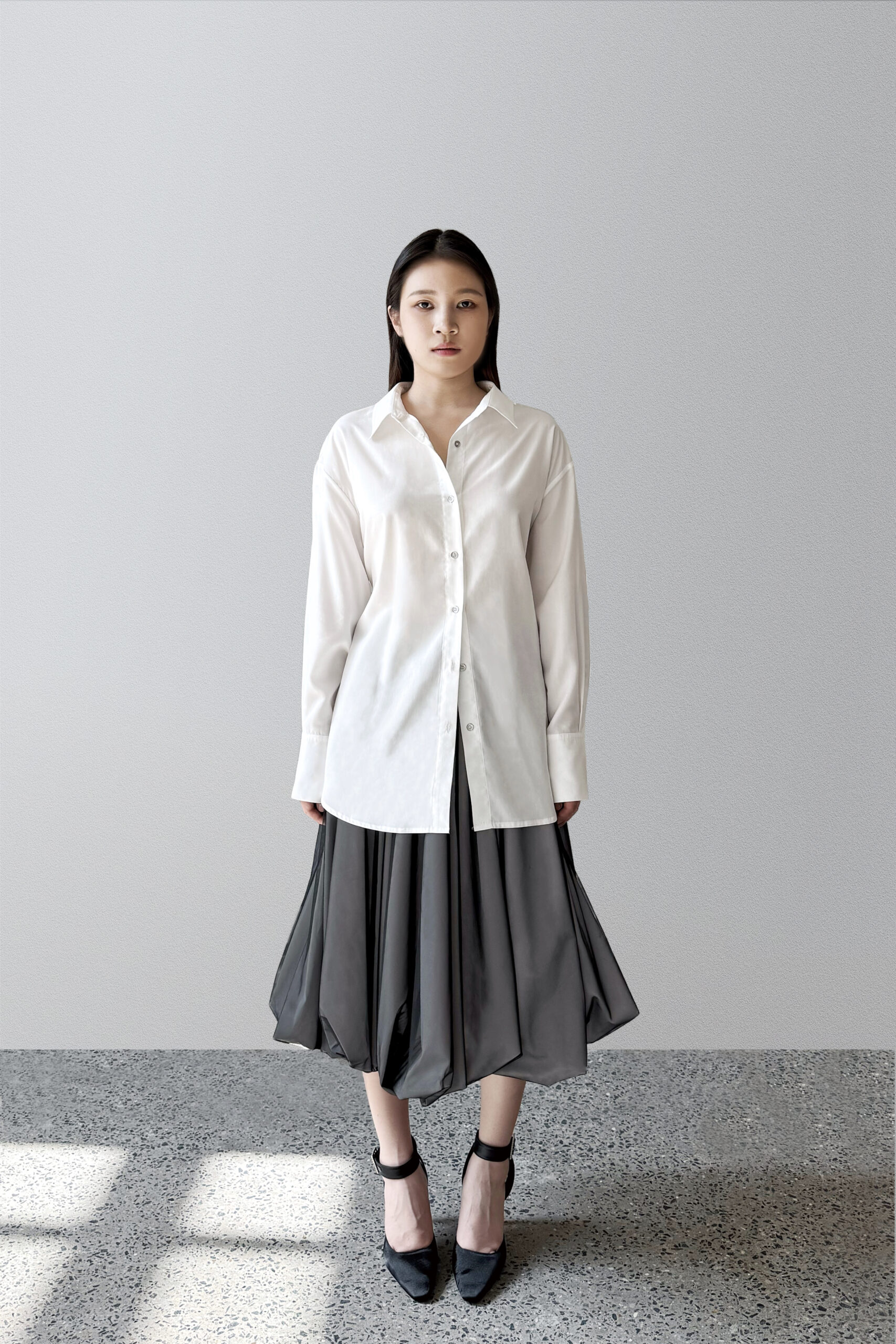
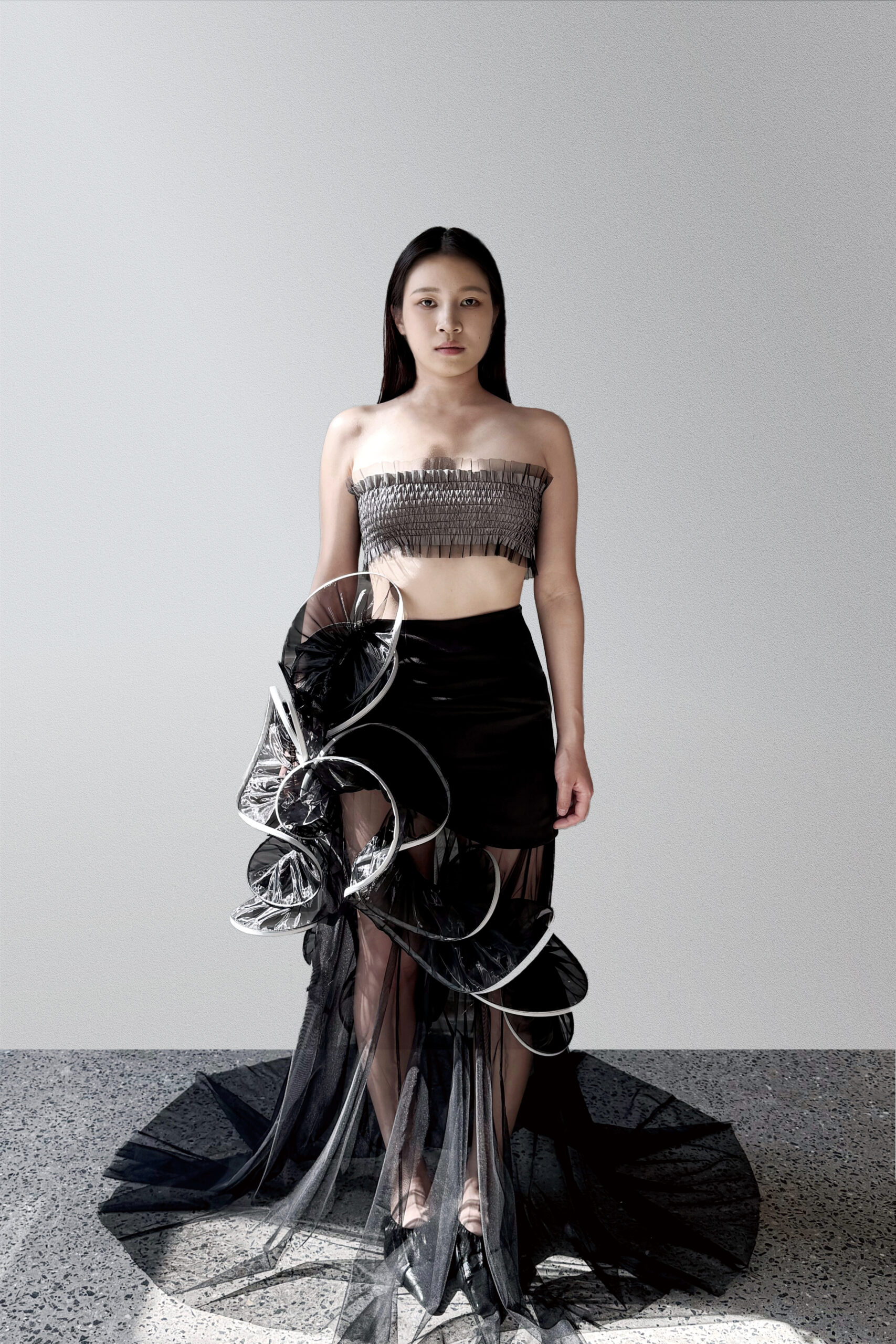
Imagery courtesy of Jiaqi Studio



Founded by Jiaqi Shen in 2022, New York-based fashion brand Jiaqi Studio is centred around “being a listener in a world of storytellers.” As a strong believer in fashion as a wearable interpretation of humanity, she seeks to materialise ineffable emotions, capture intimate stories, and foster connections with the wearer through her work. The predominantly achromatic colour palette trains focus on the meticulous craftsmanship and dimension of her work.
This season, Shen ventured into couture for the first time, marrying everyday basics with breathtaking wearable art. Proportion, tactility, and form play a game of check and balances in this collection. Sculptural appendages spiral around minimalist column gowns, drawing the viewer’s eye towards and manipulating an otherwise concealed female form; asymmetrical and cropped hemlines brings focus to the negative space between hemlines; intentionally-positioned ruching and tulle fanning diverts attention from what it conceals; transparent fabric allows for permeation while harder, iridescent fabrics reflect back to the viewer. “I used the reflective material found on construction workwear,” Shen shared. “It caught my eye on the street one day, and I realised that it had this really beautiful finish even though it’s never used in clothing.”
Speaking with the designer on the juxtaposing interplay between effortlessness and intention, demurity and drama, and exhibitionalism and concealment, I wondered whether the opposition of and marriage between Chinese and American values around femininity and autonomy I recognised in the collection was my own personal interpretation as a half Chinese American – after all, the brand seeks to foster dialogue with its wearers – or her intention. “I definitely was inspired by the East and the West,” Shen responded. “I wanted to bridge the two in one story.”
Juzui
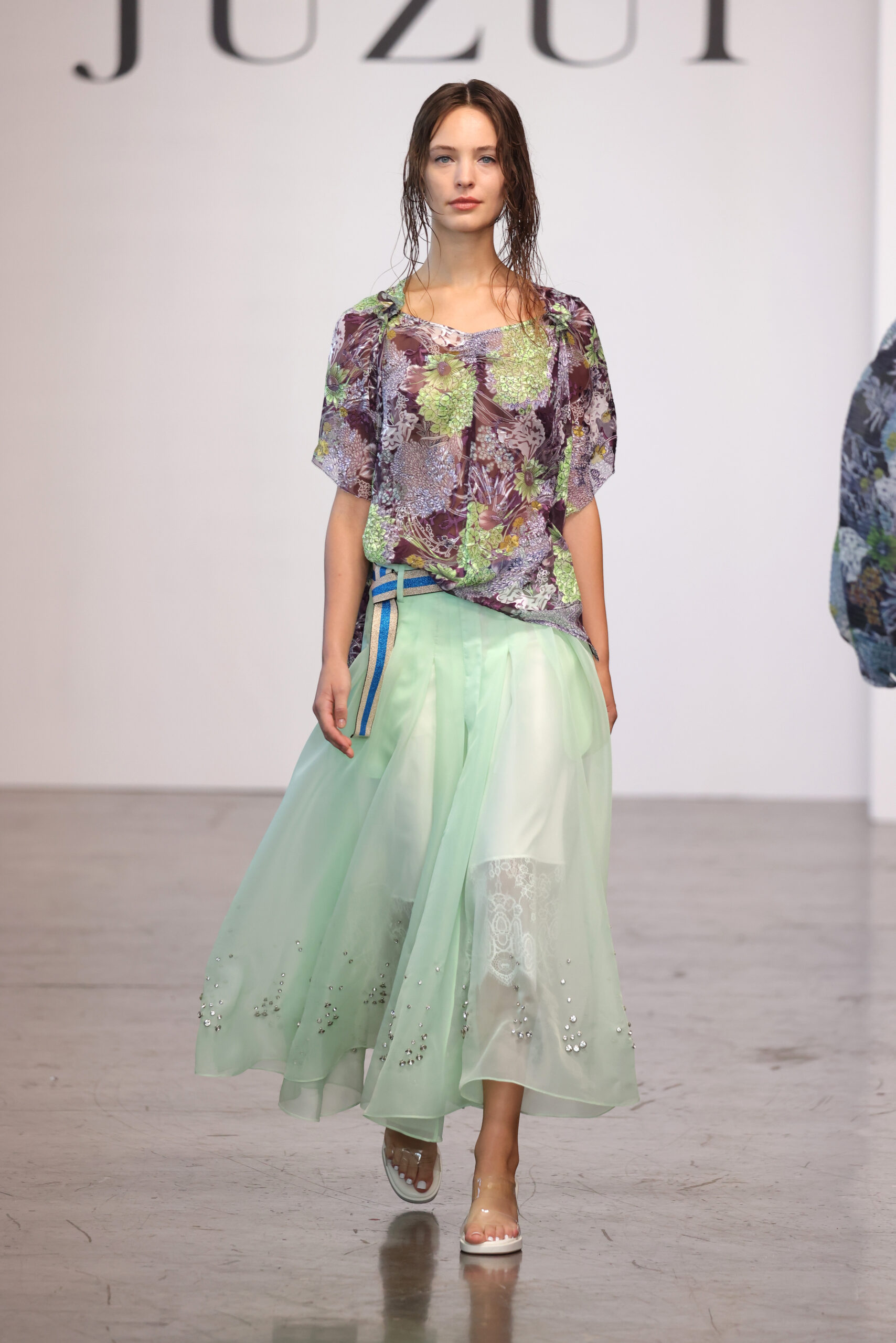
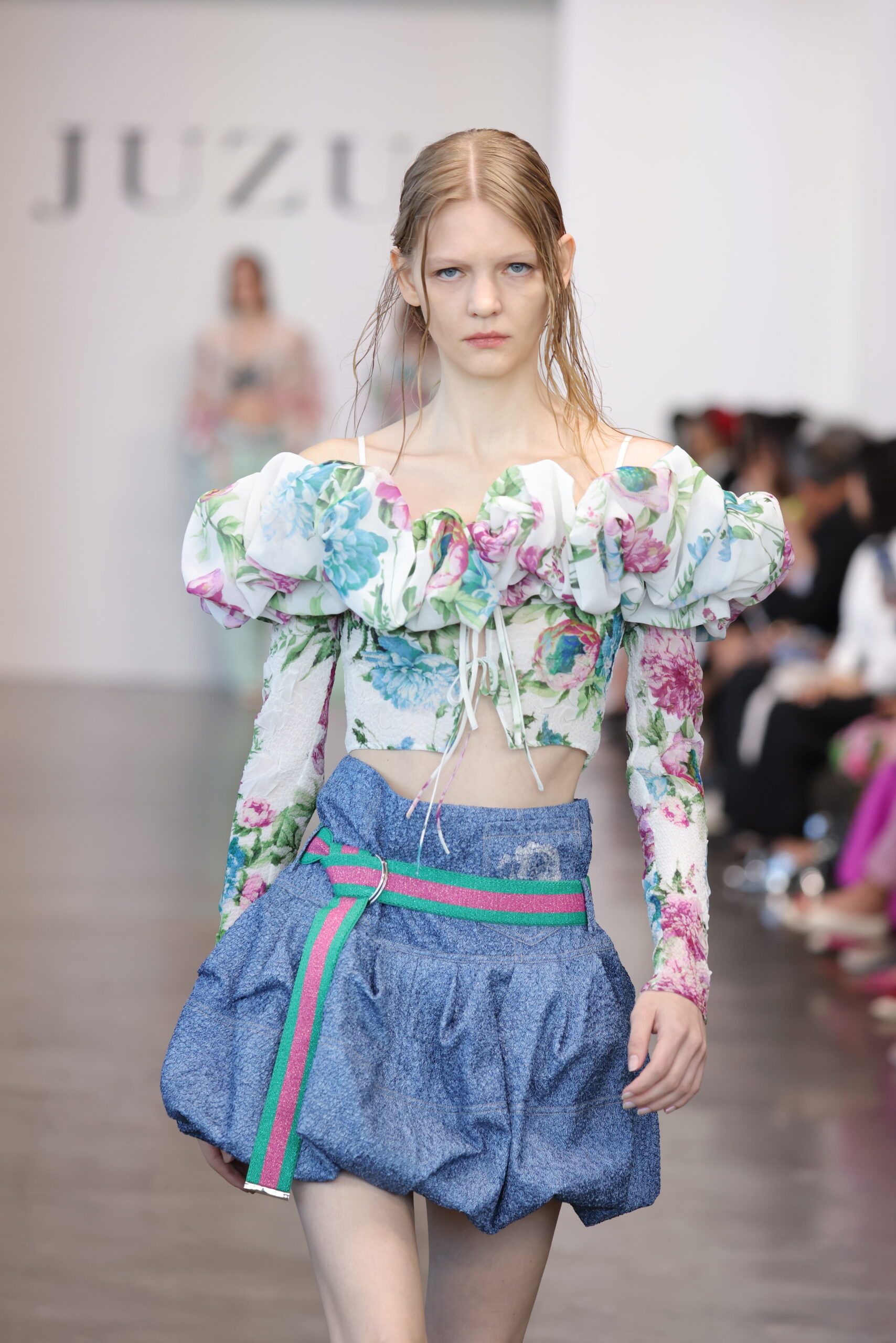
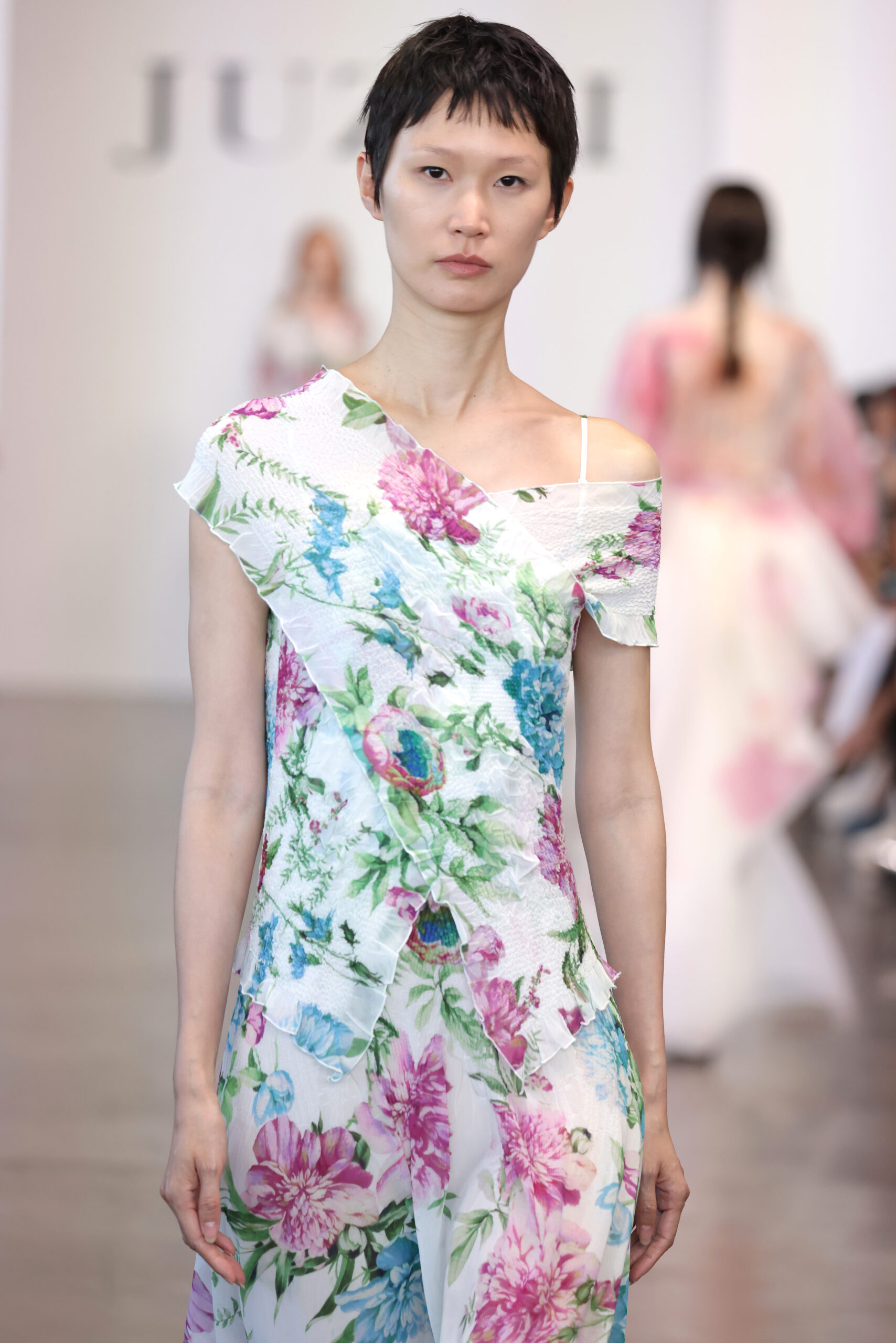
Imagery courtesy of Juzui



As a body of luxe silks, delicate drapery, and three-dimensional embroidery cascaded down the runway for a front row that included Coco Rocha, Maye Musk, and Olivia Palermo, I recognized fabrics, motifs, and materials reminiscent of my mom’s home country. Under the helm of Creative Director Taoray Wang, Juzui’s SS25 collection “Floriferous” pens a love letter to the Chinese peony, and in turn, the history, values, and cultural aesthetic behind this motif.
Collaborating with a traditional pleating company based in Jiangsu, China, Wang paid homage to the peony in both structure and surface design — emulating the flower’s form through innovative fabric reconstruction and silhouette manipulation. Her fluency in colour application shined through an array of budding petals and fully bloomed flora motifs printed and embroidered throughout the collection. The ethos also embodied the designer’s hope for the future of an aesthetic she has coined as “Neo-Chinese fashion.” “The more I understand Juzui and the sophisticated women it represents, the more I can feel their inherent grace, tolerance, and optimistic spirit,” Wang shares. “I am inspired to create designs that are both inclusive and artistically aesthetic, aiming to provide these women with a ‘zero pressure’ and unrestricted wearing experience.”
“I feel that the brand is blossoming with a passionate and forward-looking spirit.” We agree.
Allina Liu
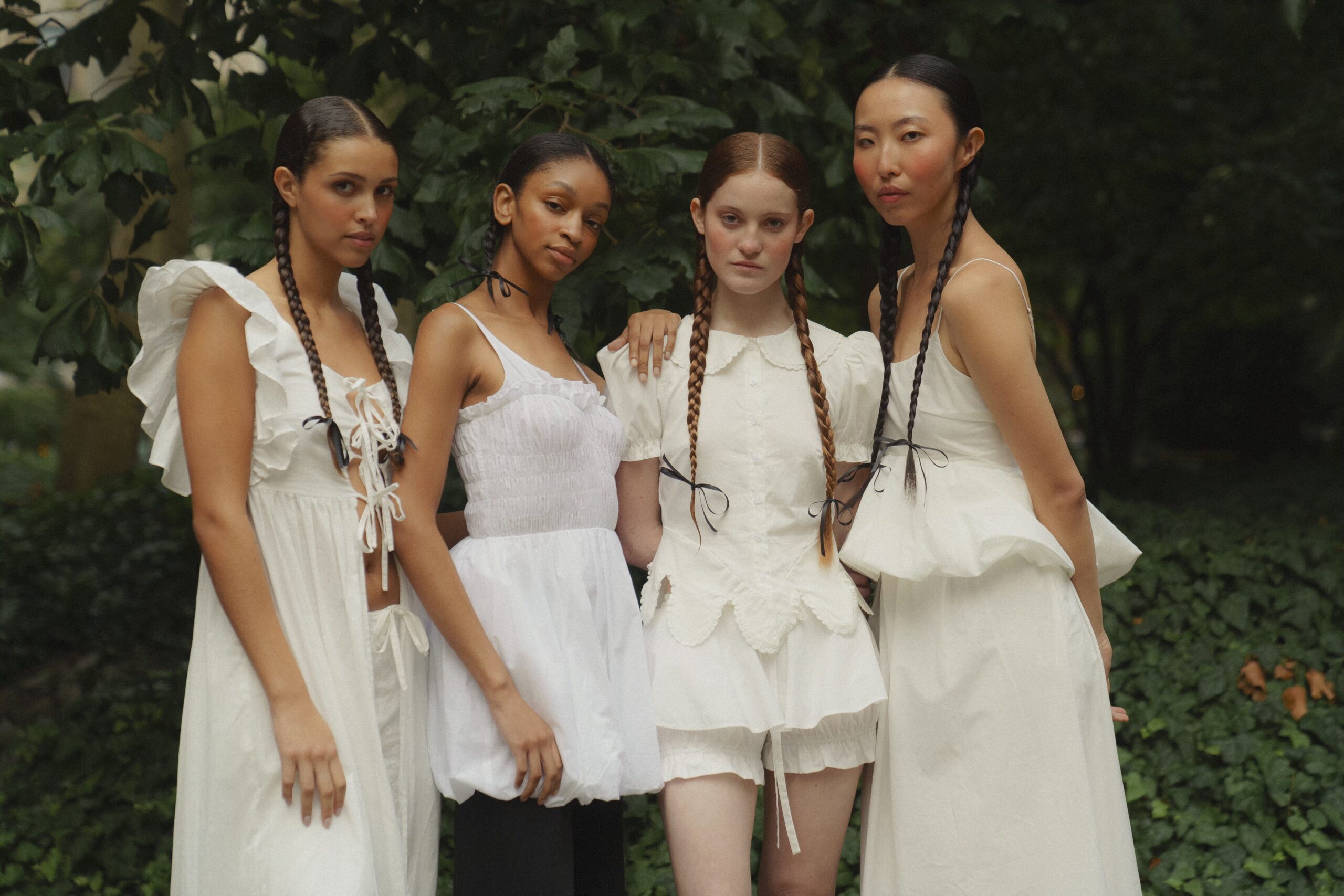
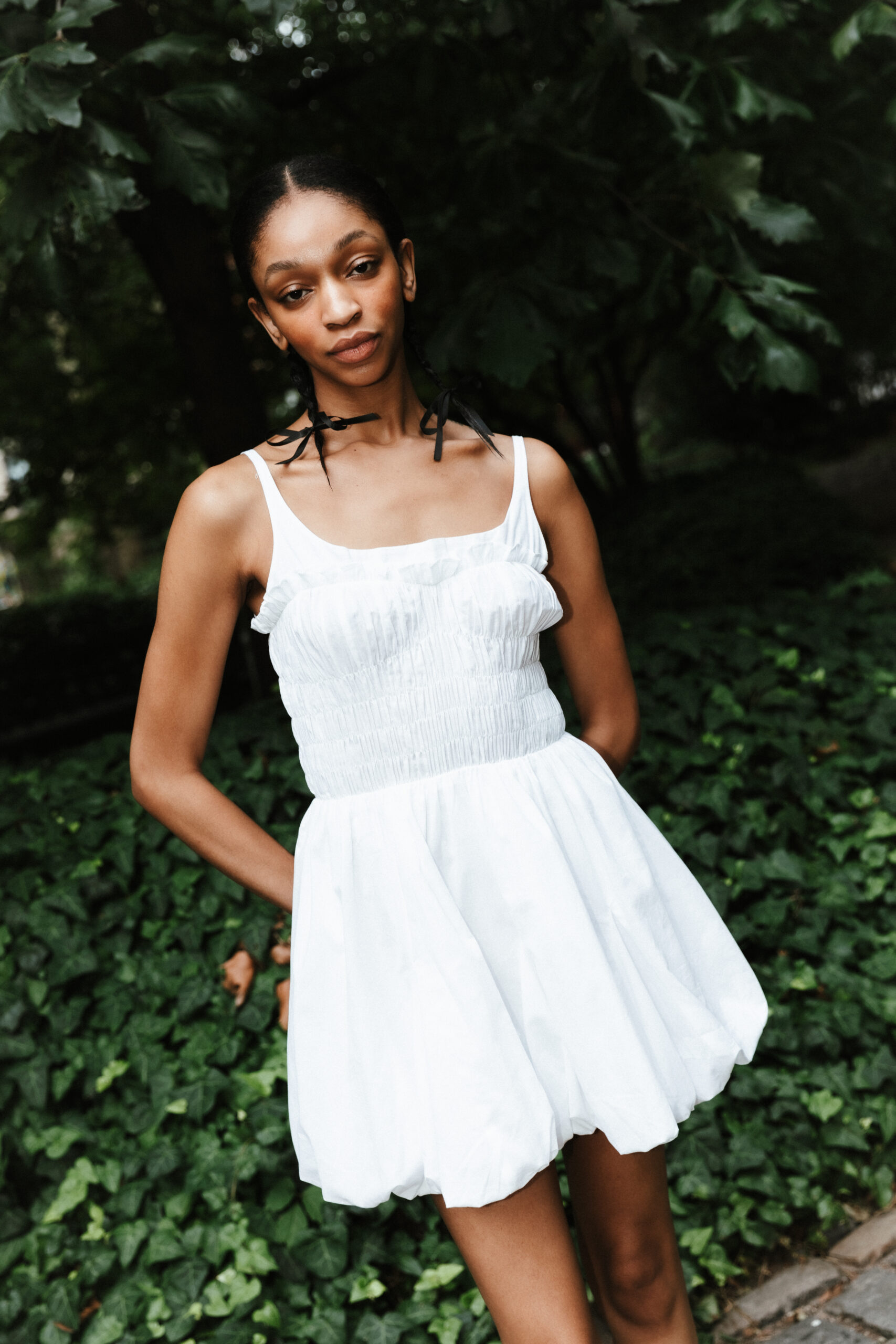
Imagery courtesy of Allina Liu


Walking into St. Mark’s Church-in-the-Bowery during NYFW, the last thing I expected was to be greeted by a barefoot girl in a demure, poofy-sleeved feminine button down, standing directly in the entrance and staring into my soul with an almost manic smile. Her age was hard to discern with her bowtied braids and minimalist makeup, but her gaze was so unwavering, so unapologetic, with a smile so stiff, that I felt like a childhood doll had arisen, or a ghostly friend of my past had come back to life to haunt me. I quickly noticed that she was just one of many models surrounding a central figure in denim – the sole departure from the otherwise monochromatic white collection.
This first model encapsulated the ethos of Allina Liu’s Spring 2025 collection, “Good for Her,” which was presented through a circle of models barefoot on mossy flooring in the centre of the church. Inspired by woman-led cults and the Pagan tradition of Midsommar, the designer referenced folk costume silhouettes from traditional Scandinavian bunads. The circle of disciplines were adorned in daffodils, which were quilted through trapunto stitching, referencing their usage in Pagan spells to conjure resilience. When asked about how the feminine ethos of Allina Liu has matured with complexity this season, Liu shared that she was inspired by the silencing of women in history. “I feel more anger and intensity about it than ever,” she said. “And I think it’s something we need to focus on more than ever in this election cycle.” She went on to share that the tension between dainty femininity and demonic undertones harkened back to a particular silencing of women in history: the persecution of women who practised healing, wisdom, and spiritual rites, who were demolished, punished, and convicted as witches.
The aestheticization of female erasure throughout history in this collection services to reclaim female agency during this critical time: the power of the cult members was contagious as guests weaved between them to get to the divine feminine in the centre of the circle, whose denim referenced the infamous Pagan cult leader Tony Alamo.
Another exciting development seen in this collection was the usage of novel sustainable materials. “I partnered with Brooklyn-based lab TômTex to create a revolutionary biomaterial made out of an enzyme from recycled seafood shells and mushrooms,” she shared. “So all the ‘leather’ featured in the collection is naturally biodegradable.”

